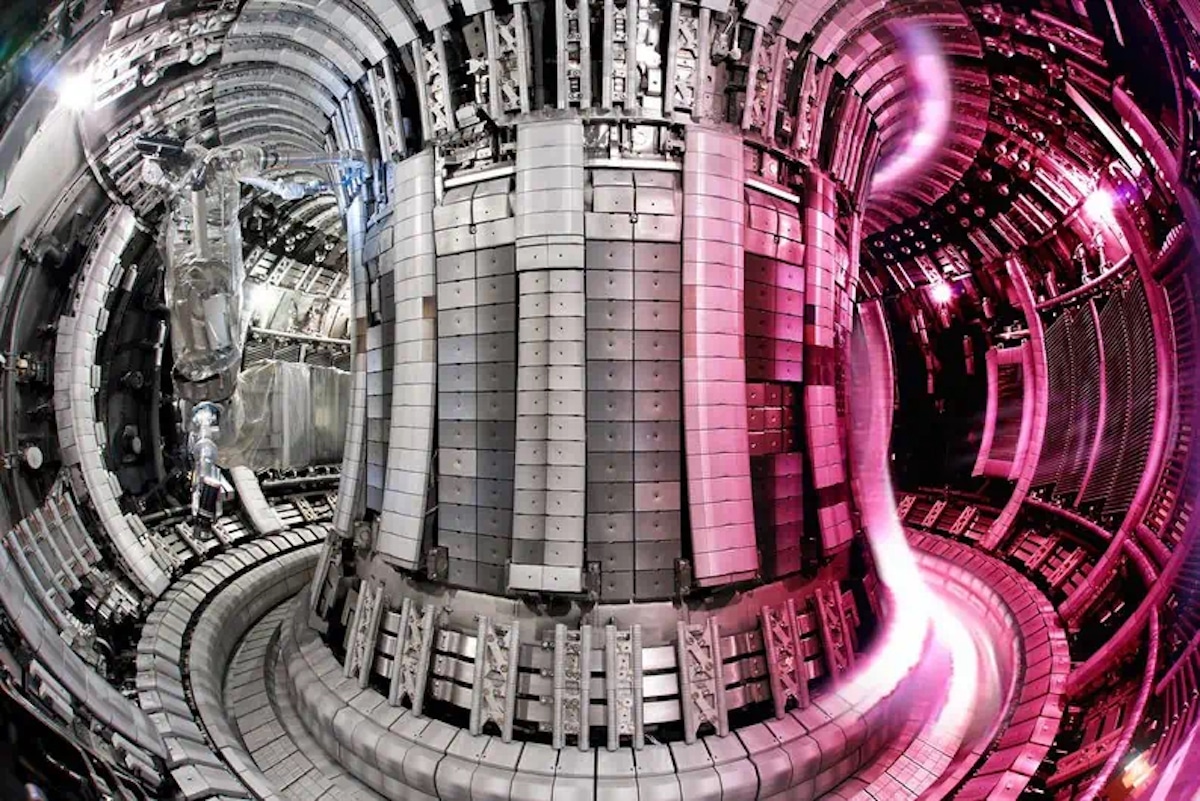
Nuclear Fusion, a ‘Near-Limitless’ Source of Clean Energy, Gets Closer to Reality After Record-Breaking Experiment

European researchers at the Joint European Torus (JET) set a heat record for the highest sustained nuclear fusion reaction ever recorded at 59 megajoules of heat, more than twice the previous record. The flash of heat lasted only five seconds, but it brought scientists one step closer to harnessing the same energy source that powers our sun — an energy source that could one day provide a nearly unlimited source of clean power.
Nuclear fusion is the process of two superheated lightweight atomic nuclei, in this case hydrogen atoms, combining to form a heavier atomic nucleus, in this case helium. The result is the release of an enormous amount of energy. The ionized gases inside the doughnut-shaped JET are heated to a temperature that is ten times hotter than the sun, reported The Guardian.
“These landmark results have taken us a huge step closer to conquering one of the biggest scientific and engineering challenges of them all,” said UK Atomic Energy Authority chief executive Dr. Ian Chapman, as The Guardian reported. “It’s clear we must make significant changes to address the effects of climate change, and fusion offers so much potential.”
The achievement comes after more than two decades of testing and adjustments at the Culham Centre for Fusion Energy in Oxfordshire, England.
There was one main problem, however: researchers haven’t yet been able to generate more energy from the nuclear fusion process than they have to put into it, The Wall Street Journal reported.
To fuel the JET experiment, two hydrogen isotopes — deuterium and tritium — were combined to produce helium gas, reported The Guardian. Now that the researchers have shown that nuclear fusion is possible with those isotopes as fuel, it can be used in a bigger fusion project, called ITER, being constructed in southern France.
The goal of ITER is to generate 500 megawatts of power from nuclear fusion that lasts up to one hour, reported The Wall Street Journal. According to Dr. Chapman, ITER experiments will start in 2025 or 2026.
“The energy you can get out of the fuel deuterium and tritium is massive. For example, powering the whole of current UK electrical demand for a day would require 0.5 tonnes of deuterium, which could be extracted from seawater — where its concentration is low but plentiful,” said Tony Roulstone from the Department of Engineering at the University of Cambridge, to CNN.
Even though five seconds may not sound like a long time, Imperial College London reader in nuclear materials Dr. Mark Wenman said that the experiment showed the fuel was able to be burned in a manner that could be sustained, The Guardian reported.
“Five seconds doesn’t sound like much, but if you can burn it for five seconds, presumably you could keep it stable and keep it burning for many minutes, hours, or days, which is what you are going to need for a proper fusion power plant. It’s the proof of that concept that they have achieved,” said Dr. Wenman, as reported by The Guardian.
Nuclear power currently makes up about ten percent of the electricity on our planet, but it is a product of nuclear fission, which results from the splitting of atoms, reported The Wall Street Journal. Fission is the culprit of radioactive waste, but the process of nuclear fusion doesn’t result in this waste.
Another appealing thing about fusion energy is that it releases no greenhouse gases and the fuel produced by nuclear fusion has about ten times more energy than gas, oil or coal, as The Guardian reported.
“Now it is up to the engineers to translate this into carbon-free electricity and mitigate the problem of climate change,” said University of Newcastle emeritus professor of energy conversion professor Ian Fells, reported The Guardian.

 233k
233k  41k
41k  Subscribe
Subscribe 